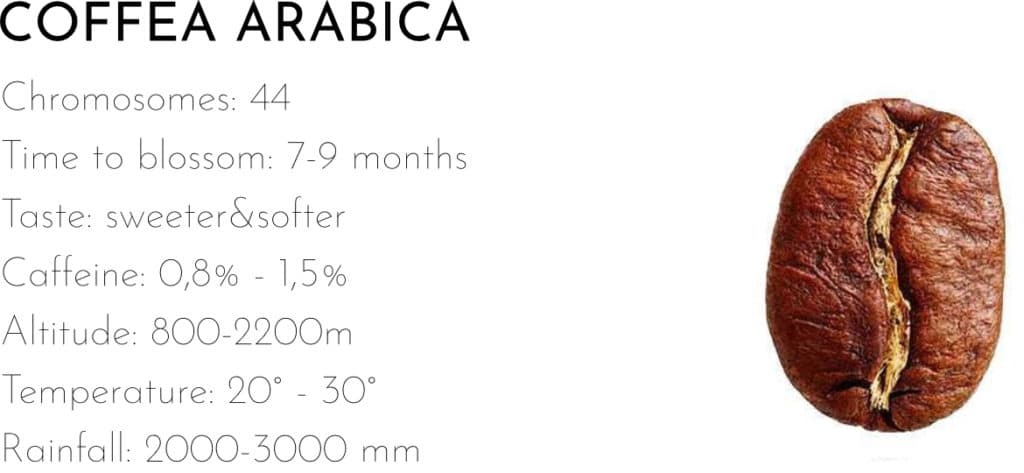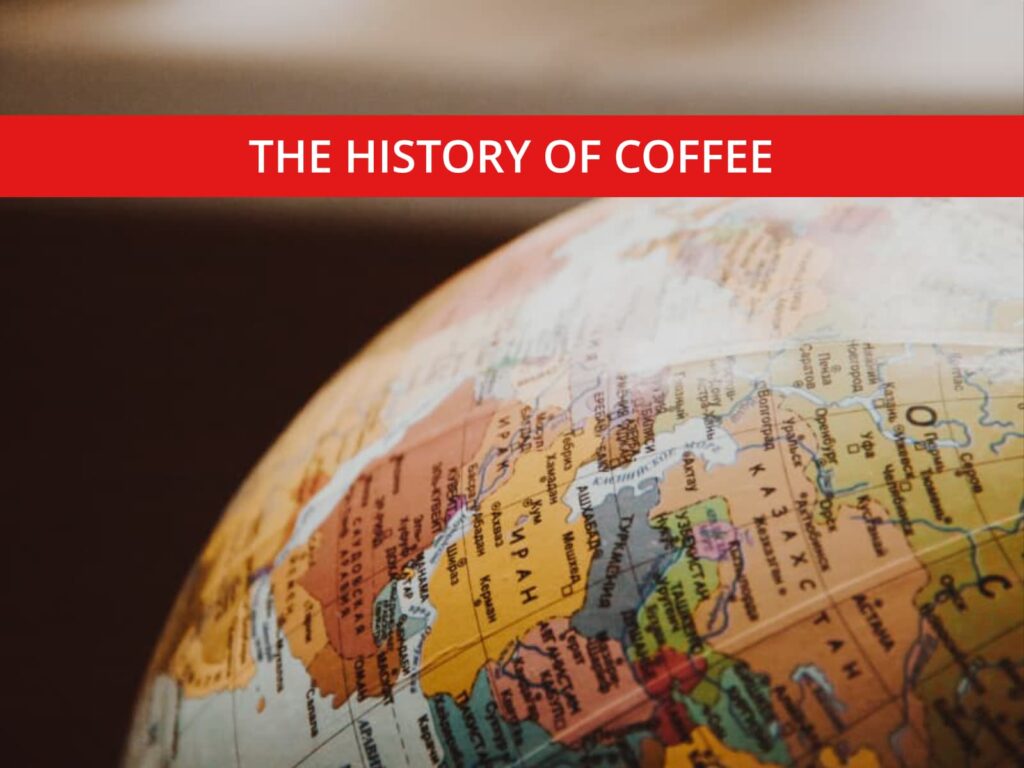The coffee plant and its fruits.
We drink it every day; it is part of our daily rituals, whether at the bar or at home. But have we ever wondered where coffee comes from?
Coffea is a genus of flowering plants in the Rubiaceae family. It can be as small as a small shrub or as tall as a medium-sized tree, depending on the species and type of cultivation. Coffea has opposite leaves, meaning there are two leaves at each node along the branch.
The fruit is a 2-seeded “drupe” fruit, commonly called cherry. The seeds are the coffee beans. However, if you squeeze to open the coffee fruit, you will find that the pulp is tiny, and the two seeds fill most of the drupe.

There are many different species of coffee, over 120, according to the World Coffee Research (WCR). Coffea Arabica is one of the two species of coffee plants that are under extensive cultivation globally. The other one is C Coffea Canephora, commonly called Robusta. Arabica produces higher quality than Robusta.
The Category underlying the species is called “variety”. Varieties refer to different variations within the species, e.g., Species Coffea Arabica – Variety Bourbon.
Coffea Arabica, which is native to Ethiopia, was transported out of its homeland into neighbouring Yemen. In the early 18th Century, some seeds or trees were introduced from Yemen to Java, giving rise to the “Typica” lineage, possibly by the Dutch, perhaps transported by the mythical Monk Baba Budan. The French transported the seeds from Yemen to the island of Bourbon, giving the name to the variety.

These varieties originated in the forests of Ethiopia, where Coffea Arabica originated, through an extraction process. Arabica is a very high-quality coffee, but unfortunately, it is prone to many diseases.
In the 1920s, a Coffea Arabica plant and a Coffea Robusta plant from East Timor’s island were crossed to create a hybrid. This Arabica variety contains Robusta genetic material that allowed the plant to resist coffee leaf rust.
Difference between Arabica and Robusta
Here is a list of some differences between the two coffee species:
- Taste: Robusta has a taste often described as strong, with a peanut aftertaste, while Arabica beans tend to have a sweeter and smoother taste with fruit and berries notes. Robusta has lower acidity levels than Arabica coffee, meaning it generally tastes much less sweet. One of the reasons is that Robusta contains more caffeine than Arabica. Caffeine has a bitter taste, and Robusta bean has 2.7% caffeine content, almost double compared to the 1.5% of Arabica.
- Lipid & Sugar content. As we said before, Arabica contains almost 60% more lipids and almost twice the concentration of sugar than Robusta. This factor probably influences why we prefer the taste of Arabica rather than Robusta.
- Price. From a price perspective, Robusta beans are about half the price of Arabica.
- Growing Condition. The ideal growing temperature ranges between 15-24°C (59-75.2°F) for Arabica and 24-30°C (75.2-86°F) for Robusta. Robusta cherries take about ten-eleven months to ripen, while Arabica cherries take about nine months. Ripe Arabica cherries fall from the plant while ripe Robusta cherries stay on the plant. An Arabica plant yields about 1500-3000kg of beans, while a Robusta plant yields about 2300-4000kg of beans. The optimum rainfall for Arabica cultivation is 1500-2000mm, while for Robusta, this number increases to 2000-3000mm. The optimum altitude (meters above sea level) for growing Arabica is 1000-2000 meters, while for Robusta is 2000-3000 meters.
- Genetics. Arabica has 44 chromosomes, while Robusta has only 22.
- Shape. Robusta beans are much more circular, while Arabica is more oval. Robusta beans are also darker and smaller than Arabica. Robusta leaves are larger.


Robusta coffee accounts for 25% of the world’s coffee production and is grown mainly in Vietnam, West Africa, Indonesia, and other South-East Asia parts.
One thing to note is that, although Arabica is associated with higher quality than Robusta, this is not always the case. High-quality Robusta coffee usually tastes as good as or better than low-quality Arabica.
Arabica coffee is preferred for direct consumption. Robusta is excellent for blends (especially for espresso types): it provides body to the drink, but it is not pleasant when drunk alone. Arabica coffee has a worryingly low genetic diversity; it is more susceptible to diseases and may even become extinct in the future. It is predicted that by 2050 this could lead to a 10-20% decrease in coffee crop yields.




